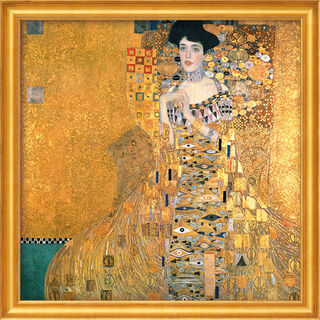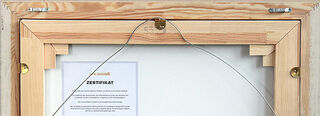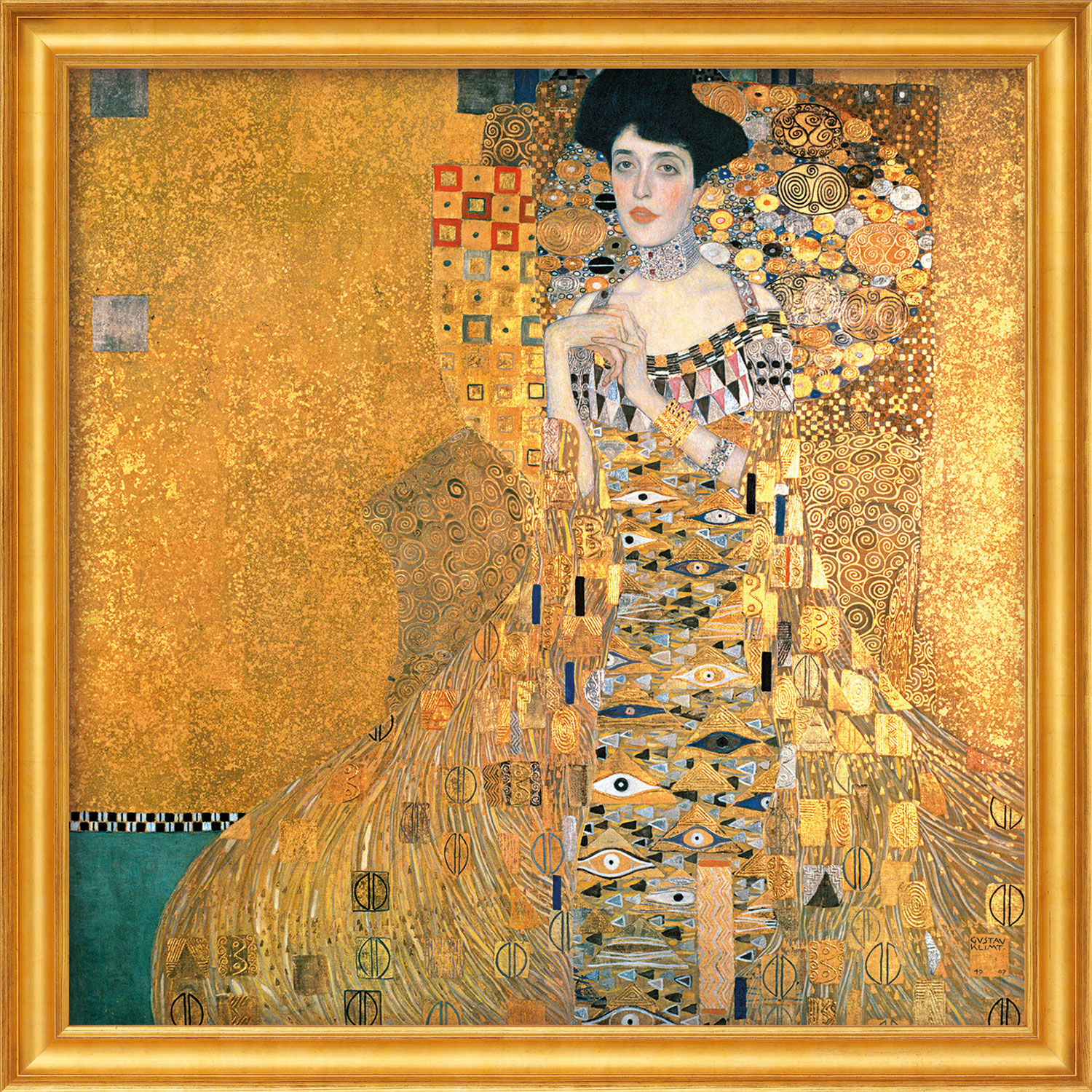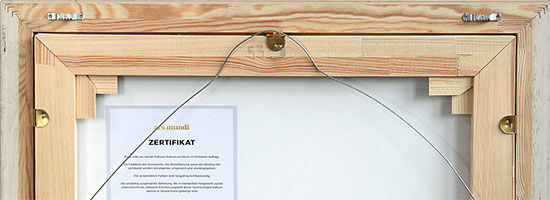Picture "Adele Bloch-Bauer I" (1907), framed


Picture "Adele Bloch-Bauer I" (1907), framed
Quick info
ars mundi Exclusive Edition | limited, 499 copies | numbered | certificate | reproduction, Giclée print on canvas | on stretcher frame | framed | size 79 x 79 cm
Video
Detailed description
Picture "Adele Bloch-Bauer I" (1907), framed
"It is the highest sum ever paid for a painting", reported the New York Times excitedly in June 2006. For the record sum of 135 million dollars, the cosmetics manufacturer Ronald Lauder acquired Gustav Klimt's famous oil painting "Adele Bloch-Bauer I" - also known as "Golden Adele" - for the New Gallery in Manhattan, New York.
The icon of Art Nouveau once hung in Vienna's Belvedere City Palace as an inalienable Austrian cultural heritage with the "Kiss" and other masterpieces by Viennese master Gustav Klimt. After years of litigation, it has now been returned to the descendants of the original owners.
This was the first time such a high-profile Klimt painting had come onto the art market - and it immediately eclipsed the then-highest price of $104.1 million for a Picasso painting.
Original: New Gallery, New York.
Reproduced using the Fine Art Giclée process directly onto 100% cotton artist's canvas and mounted on a stretcher frame for a brilliant, authentic reproduction. Framed in handmade, golden solid wood frame. The edition is limited to 499 copies and individually numbered on the certificate on the back. Size 79 x 79 cm. ars mundi Exclusive Edition.
Frame configurator
Customised picture frame

Frame configurator
Customised picture frame






Customer reviews
Frame variant: framed
Ein herrlicher Druck, toller Rahmen. Sehr schnell versendet und sicher verpackt. Vielen Dank.
Frame variant: framed
Die Abwicklung der Bestellung und auch der Reklamation ging schnell und unkompliziert. Immer wieder.
Frame variant: framed
rasches service. sehr sehr gute verpackung!!!! sehr gutes angebot, sehr gute qualitat!!!!
Frame variant: framed
Alles OK !
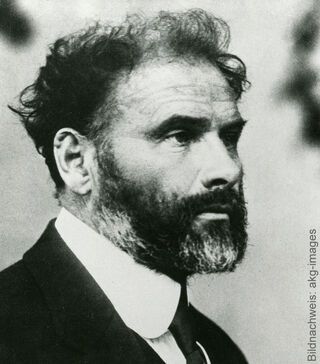
About Gustav Klimt
1862-1918, Austrian painter, a famous representative of Viennese Art Nouveau
Gustav Klimt (1862-1918) was already a renowned artist, influencing the Art Nouveau style of Vienna's famous Ringstrasse with his murals and co-founding the Vienna Secession, when he created his "Golden Style". Inspired by the Byzantine mosaics, he inserted ornamental colour surfaces into a golden bed just like encased gemstones. With his visual art, Klimt describes the path of life of human beings who, negatively influenced by instincts, find their redemption in the kiss. The depictions of the body convey a subtle eroticism, although their figures dissolve into ornamental and geometric colour surfaces. He utilized this method not only for his depictions of couples but also for his portraits of rich women and landscape paintings. This two-dimensional style is today the epitome of Klimt's intensely coloured art, which, however, only characterises his work from 1905 onwards.
Klimt was not only adept at gold and opulence but was also a brilliant draughtsman. He produced numerous drawings in the course of his life. Mostly as preliminary studies for larger works.
As a son of an engraver, Klimt learned his craft at Vienna‘s School of Applied Arts. While still seeking to find his own artistic style, his early work is based on historicism especially influenced by Hans Makart, the artist Prince of the Habsburg monarchy in the late 19th century. Together with his brother Ernst and Franz Matsch, the three young painters formed an artistic community and received numerous commissions to design new buildings on Vienna's Ringstrasse. The staircases of Vienna's Burgtheater or the Museum of Fine Arts bear witness to the historicist style of this collaborative team.
In the late 1890s, like so many young and open-minded artists of the fin de siècle, Gustav Klimt abandoned the academic tradition. In 1897, together with other artists, he founded the "Wiener Secession", which he presided over as president until his resignation in 1905. To this day, the Secession's exhibition building remains a place and temple for new young art.
Graphic or sculpture edition that was initiated by ars mundi and is available only at ars mundi or at distribution partners licensed by ars mundi.
Giclée = derived from the French verb gicler "to squirt, spurt".
The giclée method is a digital printing process. It is a high-resolution, large-format printout on an inkjet printer with special different-coloured dye- or pigment-based inks (usually six to twelve). The colours are fade-proof, i.e. resistant to harmful UV light. They have a high richness of nuance, contrast and saturation.
The giclée process is suitable for art canvases, handmade and watercolour paper as well as for silk.
Art Nouveau, or the German term Jugendstil (lit.: "Youth Style"), is the art epoch between 1890-1910. The name originates from the Munich-based magazine "Jugend" (Youth), founded in 1896. It was the German counterpart of Art Nouveau (France), but also internationally known as Modern Style (England) or Secession (Austria).
Art Nouveau conquered all of Europe and innumerable works were created, ranging from painting and applied arts to architecture. One of the requirements of Art Nouveau was the artistic design of everyday objects, i.e. beauty and practicality were combined. The desired unity of the artistic ability could only be achieved through individually influenced design, which made the Jugenstil the precursor of modernism. The essential characteristic of Art Nouveau is linear, often asymmetrical ornamentation. The models are particularly taken from nature and flora.
Major Art Nouveau centres were formed in Munich, Darmstadt, Brussels, Paris and Nancy (Glass Art by Emile Gallé). The Viennese architecture of that time was determined by Otto Wagner and J. Hoffmann. Gustav Klimt created paintings that gave sensual shape to the spirit of Art Nouveau.

